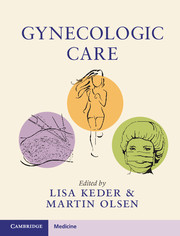Book contents
17 - Nontubal Ectopic Pregnancy
from Section 3 - Infertility
Published online by Cambridge University Press: 01 February 2018
Summary
Introduction
The majority of ectopic pregnancies (close to 90 percent) implant within the ampullary portion of the fallopian tube. However, implantation in other locations occurs in approximately 10 percent of all ectopic pregnancies. Nontubal ectopic pregnancies include those that implant within the abdominal cavity, cervix, ovary, interstitial portion of the fallopian tube, broad ligament, uterine cornua and within a prior cesarean section scar (1). Such ectopics are associated with increased maternal morbidity and mortality given their tendency for later presentation as compared to tubal ectopic pregnancies (2). Recent advances in both ultrasound technology and delineation of clear criteria for diagnosing nontubal ectopic pregnancies have enabled earlier diagnosis of these rare types of ectopic pregnancies. This has contributed to the introduction of novel treatment options including local injection to complement or replace traditional medical or surgical management in select patients.
Traditional treatment options for tubal ectopic pregnancies have included medical management with methotrexate, surgical management in hemodynamically unstable patients, and expectant management in select candidates (1,3). In contrast, local injection of nontubal ectopics as well as heterotopic pregnancies is a viable option for many patients and offers several advantages over administration of systemic methotrexate or surgical management. Specifically, local injection allows for a concentrated delivery of methotrexate or potassium chloride (KCl) directly at the site of the ectopic pregnancy, potentially resulting in prolonged therapeutic levels and possibly fewer side effects when compared to systemic therapy (4). Furthermore, for pregnancies with fetal cardiac activity, local injection offers immediate feedback regarding the success of the intervention with the cessation of cardiac activity. This is in contrast to systemic injection where an ectopic pregnancy with known cardiac activity is observed in an outpatient setting while waiting to assess treatment efficacy. With respect to heterotopic pregnancies, systemic therapy with methotrexate is contraindicated, and local injection with KCl enables successful treatment while trying to preserve the intrauterine pregnancy. Finally, current evidence supports the option of a combination of local therapy with systemic methotrexate to optimize success with nonsurgical management of nontubal ectopic pregnancies. This chapter will provide a general overview of nontubal ectopic pregnancies, patient selection criteria for local treatment, available agents for local injection, and overall treatment outcomes.
- Type
- Chapter
- Information
- Gynecologic Care , pp. 162 - 174Publisher: Cambridge University PressPrint publication year: 2018



